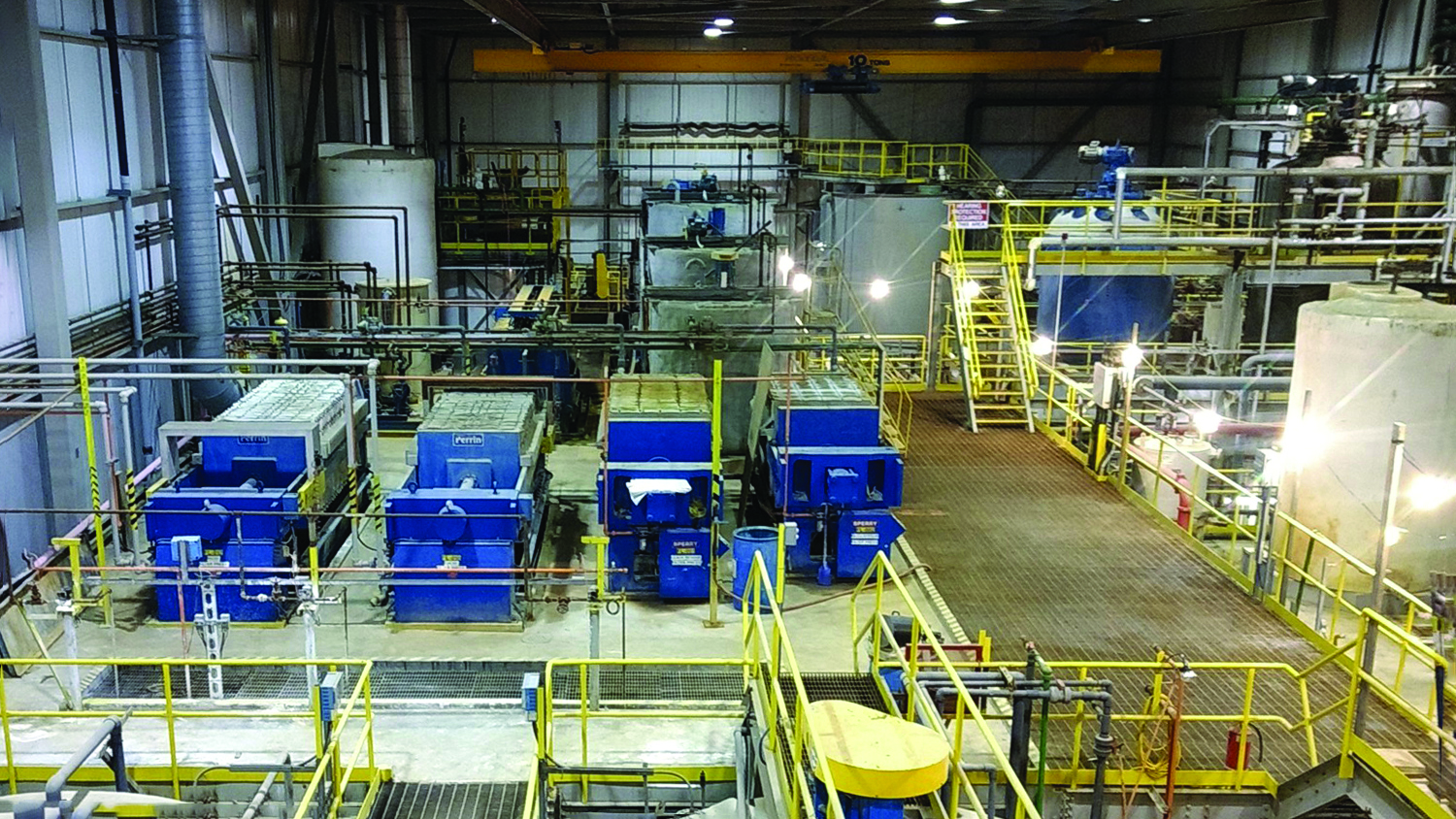
First Cobalt plans to expand an existing cobalt refinery’s capacity from 12 metric tons per day throughput to 55 mt/d. Plant feed will come from Glencore’s operations in the Democratic Republic of Congo, where cobalt is obtained as a byproduct of copper mining.
First Cobalt Corp. reported recently that it received positive results from an independent feasibility study conducted on its permitted cobalt refinery in Ontario, Canada. The study, according to the company, envisages expanding the existing facility and adapting it to produce cobalt sulphate, a component in the manufacturing of batteries for electric vehicles.
The refinery is located north of Toronto, Canada. It was permitted in 1996 with a nominal throughput of 12 metric tons (mt) per day and operated intermittently until 2015, producing a cobalt carbonate product along with nickel carbonate and silver precipitate. The facility is located on 120 acres, with two settling ponds and an autoclave pond. The current footprint also includes a large warehouse building that once housed a conventional mill.
First Cobalt said testing of third-party cobalt hydroxide in 2019 using the refinery flow sheet confirmed suitability of cobalt hydroxide as a source of feed to produce a high purity, battery grade cobalt sulphate. In July 2019, First Cobalt and Glencore AG agreed to a partnership framework providing for a phased approach to recommission the refinery. Subject to certain conditions, including the completion of a positive feasibility study and agreement upon commercial terms, the framework agreement contemplates that First Cobalt will treat cobalt feed material supplied from Glencore’s DRC operations for an initial term of up to 4.5 years on a tolling basis, with Glencore providing up to 100% of the capital required to recommission and expand the facility. The objective is to produce approximately 25,000 mt/y of cobalt sulphate.
Ausenco Engineering Canada Inc. completed two studies: (1) a prefeasibility study on an interim recommissioning of the refinery by late 2020 or early 2021, and (2) a feasibility study on an expansion scenario to 55-mt/d nameplate capacity, targeted for commissioning in Q4 2021. The strategic objective is to achieve 5,000 mt/y of cobalt production (55-mt/d nameplate, 50-mt/d average), which would account for approximately 5% of the current global refined cobalt market.
The main refinery gallery in the building complex currently houses the pressure oxidation circuit, solvent extraction circuit (SX), product filtration and a control room. The proposed new layout adds two new structures to the main complex; one for tailings belt filters and the other for crystallization and product bagging. A new external building is also contemplated to house an expanded SX circuit and sodium management infrastructure. Other changes to the site layout include additional tankage for reagent storage in the tank farm area and improvements to the ring-road around the refinery to accommodate transport trucks.
An adjacent 80-acre tract held by First Cobalt will be used for a new dry stacked tailings management facility. Tailings from the process are a gypsum that can be dewatered and stacked for permanent dry storage, according to the company.
The study describes the intended plant modifications: Cobalt hydroxide feed material will arrive in bulk bags that will be emptied into a re-pulping system. The slurry is then leached with sulphuric acid under atmospheric conditions. Slurry exiting the leach tanks is pumped to the neutralization circuit where limestone is added to raise the pH and precipitate impurities such as iron. To minimize downstream scaling, the slurry is cooled to 30°C-35°C in a cooling tower, which reduces soluble gypsum content. The precipitated solids are removed through thickening and filtration.
Prior to SX, the solution is reheated to raise gypsum solubility and prevent subsequent precipitation in the mixer settlers. The first SX circuit will remove manganese, copper, zinc, calcium and iron. The extraction raffinate after this step primarily contains cobalt, with nickel and magnesium present as impurities. The strip liquor reports to effluent treatment, where the impurities are precipitated and removed from solution prior to discharge.
The second SX circuit loads cobalt on to the organic solvent while any residual impurities remain in the aqueous phase. The cobalt-loaded organic then proceeds to the scrubbing mixer-settlers where the pH is adjusted to remove impurities such as magnesium and nickel that were loaded in the extraction stage. The scrubbed organic goes to a final stripping stage where the pH is lowered to bring the cobalt out of the organic phase and into the aqueous strip liquor stream. Once filtered to remove entrained organic, the strip liquor enters the crystallization step.
The filtered strip liquor is pumped to a mechanical vapor re-compression forced circulation crystallizer. The crystallizer functions by evaporating water using steam in a heat exchanger, supersaturating the cobalt-rich strip liquor and causing crystallization to occur. The bleed stream of cobalt sulphate crystals reports to a thickener and centrifuge for dewatering. Together they separate the solid and liquid components of the slurry, producing a dewatered product at <3% free moisture. The centrifuged crystals then report to a fluid bed dryer to reduce the moisture content of the crystals to below 0.2% w/w. Once dried, the final product is bagged and is ready for shipment to the end customer.






